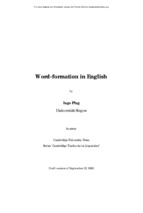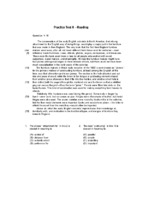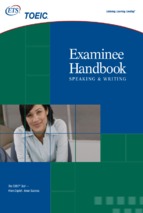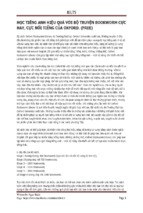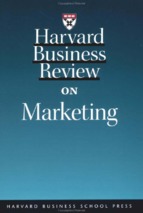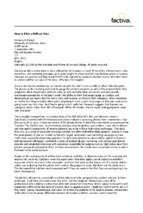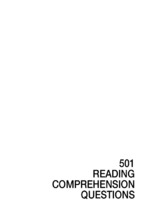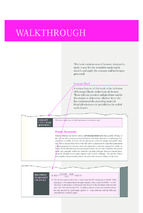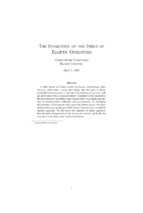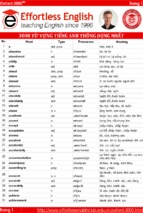FFIRS
04/12/2011
12:18:42
Page 4
FFIRS
04/12/2011
12:18:42
Page 1
Forensic Analytics
Methods and Techniques
for Forensic Accounting
Investigations
MARK J. NIGRINI,
B.COM.(HONS), MBA, PH.D.
John Wiley & Sons, Inc.
FFIRS
04/12/2011
12:18:42
Page 2
Copyright # 2011 by Mark J. Nigrini. All rights reserved.
Published by John Wiley & Sons, Inc., Hoboken, New Jersey.
Published simultaneously in Canada.
No part of this publication may be reproduced, stored in a retrieval system, or transmitted in any
form or by any means, electronic, mechanical, photocopying, recording, scanning, or otherwise,
except as permitted under Section 107 or 108 of the 1976 United States Copyright Act, without
either the prior written permission of the Publisher, or authorization through payment of the
appropriate per-copy fee to the Copyright Clearance Center, Inc., 222 Rosewood Drive, Danvers,
MA 01923, (978) 750-8400, fax (978) 646-8600, or on the Web at www.copyright.com.
Requests to the Publisher for permission should be addressed to the Permissions Department,
John Wiley & Sons, Inc., 111 River Street, Hoboken, NJ 07030, (201) 748-6011, fax (201) 7486008, or online at http://www.wiley.com/go/permissions.
Limit of Liability/Disclaimer of Warranty: While the publisher and author have used their best
efforts in preparing this book, they make no representations or warranties with respect to the
accuracy or completeness of the contents of this book and specifically disclaim any implied
warranties of merchantability or fitness for a particular purpose. No warranty may be created or
extended by sales representatives or written sales materials. The advice and strategies contained
herein may not be suitable for your situation. You should consult with a professional where
appropriate. Neither the publisher nor author shall be liable for any loss of profit or any other
commercial damages, including but not limited to special, incidental, consequential, or other
damages.
Wiley and the Wiley logo are trademarks or registered trademarks of John Wiley & Sons, Inc.
and/or its affiliates, in the United States and other countries, and may not be used without
written permission. All other trademarks are the property of their respective owners. Wiley
Publishing, Inc. is not associated with any product or vendor mentioned in this book.
For general information on our other products and services or for technical support, please
contact our Customer Care Department within the United States at (800) 762-2974, outside the
United States at (317) 572-3993 or fax (317) 572-4002.
Wiley also publishes its books in a variety of electronic formats. Some content that appears in
print may not be available in electronic books. For more information about Wiley products, visit
our web site at www.wiley.com.
ISBN 978-0-470-89046-2; ISBN 978-1-1180-8763-3 (ebk); ISBN 978-1-1180-8766-4 (ebk);
ISBN 978-1-1180-8768-8 (ebk)
Printed in the United States of America
10 9 8 7 6 5 4 3 2 1
FFIRS
04/12/2011
12:18:42
Page 3
To my daughter, Paige Nigrini.
Thank you for understanding that ‘‘the book’’
needed many late nights and weekend afternoons.
FFIRS
04/12/2011
12:18:42
Page 4
FTOC
04/19/2011
9:6:54
Page 5
Contents
Preface
xi
About the Author
xv
Chapter 1: Using Access in Forensic Investigations
1
An Introduction to Access
The Architecture of Access
2
4
A Review of Access Tables
Importing Data into Access
6
8
A Review of Access Queries
10
Converting Excel Data into a Usable Access Format
Using the Access Documenter
13
20
Database Limit of 2 GB
Miscellaneous Access Notes
24
24
Summary
25
Chapter 2: Using Excel in Forensic Investigations
Pitfalls in Using Excel
27
28
Importing Data into Excel
Reporting Forensic Analytics Results
30
32
Protecting Excel Spreadsheets
Using Excel Results in Word Files
34
36
Excel Warnings and Indicators
40
Summary
41
Chapter 3: Using PowerPoint in Forensic Presentations
43
Overview of Forensic Presentations
An Overview of PowerPoint
44
44
Planning the Presentation
45
Color Schemes for Forensic Presentations
Problems with Forensic Reports
46
50
Summary
61
v
FTOC
04/19/2011
9:6:54
vi
Page 6
&
Contents
Chapter 4: High-Level Data Overview Tests
63
The Data Profile
The Data Histogram
64
67
The Periodic Graph
Preparing the Data Profile Using Access
69
70
Preparing the Data Profile Using Excel
77
Calculating the Inputs for the Periodic Graph in Access
Preparing a Histogram in Access Using an Interval Table
79
81
Summary
83
Chapter 5: Benford’s Law: The Basics
85
An Overview of Benford’s Law
From Theory to Application in 60 Years
86
89
Which Data Sets Should Conform to Benford’s Law?
97
The Effect of Data Set Size
The Basic Digit Tests
98
99
Running the First-Two Digits Test in Access
Summary
102
107
Chapter 6: Benford’s Law: Assessing Conformity
One Digit at a Time: The Z-Statistic
109
110
The Chi-Square and Kolmogorov-Smirnoff Tests
The Mean Absolute Deviation (MAD) Test
111
114
Tests Based on the Logarithmic Basis of Benford’s Law
115
Creating a Perfect Synthetic Benford Set
The Mantissa Arc Test
121
122
Summary
129
Chapter 7: Benford’s Law: The Second-Order and
Summation Tests
130
A Description of the Second-Order Test
The Summation Test
131
144
Summary
151
Chapter 8: Benford’s Law: The Number Duplication and
Last-Two Digits Tests
The Number Duplication Test
Running the Number Duplication Test in Access
153
154
155
FTOC
04/19/2011
9:6:54
Page 7
Contents
&
vii
Running the Number Duplication Test in Excel
164
The Last-Two Digits Test
Summary
167
172
Chapter 9: Testing the Internal Diagnostics of Current
Period and Prior Period Data
173
A Review of Descriptive Statistics
An Analysis of Alumni Gifts
175
178
An Analysis of Fraudulent Data
Summary and Discussion
182
189
Chapter 10: Identifying Fraud Using the Largest Subsets
and Largest Growth Tests
191
Findings From the Largest Subsets Test
Running the Largest Subsets Test in Access
193
195
Running the Largest Growth Test in Access
197
Running the Largest Subsets Test in Excel
Running the Largest Growth Test in Excel
200
203
Summary
210
Chapter 11: Identifying Anomalies Using the Relative
Size Factor Test
Relative Size Factor Test Findings
212
213
Running the RSF Test
Running the Relative Size Factor Test in Access
215
216
Running the Relative Size Factor Test in Excel
226
Summary
232
Chapter 12: Identifying Fraud Using Abnormal Duplications
within Subsets
233
The Same-Same-Same Test
234
The Same-Same-Different Test
The Subset Number Duplication Test
235
236
Running the Same-Same-Same Test in Access
Running the Same-Same-Different Test in Access
238
239
Running the Subset Number Duplication Test in Access
Running the Same-Same-Same Test in Excel
244
248
Running the Same-Same-Different Test in Excel
252
FTOC
04/19/2011
9:6:54
viii
Page 8
&
Contents
Running the Subset Number Duplication Test in Excel
256
Summary
262
Chapter 13: Identifying Fraud Using Correlation
263
The Concept of Correlation
Correlation Calculations
264
272
Using Correlation to Detect Fraudulent Sales Numbers
Using Correlation to Detect Electricity Theft
272
276
Using Correlation to Detect Irregularities in Election Results
278
Detecting Irregularities in Pollution Statistics
Calculating Correlations in Access
282
287
Calculating the Correlations in Excel
Summary
291
295
Chapter 14: Identifying Fraud Using Time-Series Analysis
Time-Series Methods
297
299
An Application Using Heating Oil Sales
An Application Using Stock Market Data
299
303
An Application Using Construction Data
306
An Analysis of Streamflow Data
Running Time-Series Analysis in Excel
313
319
Calculating the Seasonal Factors
Running a Linear Regression
320
322
Fitting a Curve to the Historical Data
324
Calculating the Forecasts
Summary
325
330
Chapter 15: Fraud Risk Assessments of Forensic Units
332
The Risk Scoring Method
The Forensic Analytics Environment
333
335
A Description of the Risk-Scoring System
P1: High Food and Supplies Costs
336
338
P2: Very High Food and Supplies Costs
339
P3: Declining Sales
P4: Increase in Food Costs
340
342
P5: Irregular Seasonal Pattern for Sales
P6: Round Numbers Reported as Sales Numbers
344
346
P7: Repeating Numbers Reported as Sales Numbers
347
FTOC
04/19/2011
9:6:54
Page 9
Contents
&
ix
P8: Inspection Rankings
347
P9: High Receivable Balance
P10: Use of Automated Reporting Procedures
348
348
Final Results
An Overview of the Reporting System and Future Plans
349
350
Some Findings
351
Discussion
Summary
353
353
Chapter 16: Examples of Risk Scoring with Access Queries
The Audit Selection Method of the IRS
355
356
Risk Scoring to Detect Banking Fraud
Final Risk Scores
360
364
Risk Scoring to Detect Travel Agent Fraud
364
Final Results
Risk Scoring to Detect Vendor Fraud
369
369
Vendor Risk Scoring Using Access
Summary
376
385
Chapter 17: The Detection of Financial Statement Fraud
The Digits of Financial Statement Numbers
388
388
Detecting Biases in Accounting Numbers
An Analysis of Enron’s Reported Numbers
395
398
An Analysis of Biased Reimbursement Numbers
399
Detecting Manipulations in Monthly Subsidiary Reports
Predictor Weightings
404
421
Conclusions
Summary
423
424
Chapter 18: Using Analytics on Purchasing Card Transactions
425
Purchasing Cards
The National Association of Purchasing Card Professionals
426
432
A Forensic Analytics Dashboard
433
An Example of Purchasing Card Data
High-Level Data Overview
433
435
The First-Order Test
The Summation Test
438
440
The Last-Two Digits Test
440
FTOC
04/19/2011
9:6:54
x
Page 10
&
Contents
The Second-Order Test
441
The Number Duplication Test
The Largest Subsets Test
442
444
The Same-Same-Same Test
The Same-Same-Different Test
446
446
The Relative Size Factor Test
448
Conclusions with Respect to Card Purchases
A Note on Microsoft Office
449
450
A Note on the Forensic Analytic Tests
Conclusion
451
452
References
Index
459
455
FPREF
04/11/2011
22:48:49
Page 11
Preface
T
H E B U S I N E S S O F O C C U P A T I O N A L and financial statement fraud is unfortunately alive and doing very well. There are regular reports of financial
statement fraud in the financial press, and all types of financial fraud in the press
releases section of the SEC’s website. There are also regular reports of occupational fraud
in the financial press. These reports might just be the tip of the iceberg. The 2010 Report
to the Nations on Occupational Fraud and Abuse of the Association of Certified Fraud
Examiners estimates that the typical organization loses 5 percent of its annual revenue
to fraud. These statistics are confirmed in other fraud surveys such as The Global
Economic Crime Survey of PriceWaterhourseCoopers (2009) and in reports published by
the U.S. Government Accountability Office. Together with the losses from employee
fraud, there are also other corporate and public sector losses from accounting errors
such as underbilling or overpaying or duplicate payments.
Forensic analytics describes the act of obtaining and analyzing electronic data using
formulas and statistical techniques to reconstruct, detect, or otherwise support a claim
of financial fraud. In this book, forensic analytics is also used to detect accounting errors
such as underbilling or overpayments. Forensic analytics also includes the detection of
biases that come about when people aim for specific numbers or number ranges to
circumvent actual or perceived internal control thresholds. The use of forensic analytics
has been made easier with the continued increase in computing power available on
laptop computers and access to inexpensive software capable of some rigorous data
analysis on large data tables. The main steps in forensic analytics are (a) data collection,
(b) data preparation, (c) the use of forensic analytics, and (d) evaluation, investigation,
and reporting. The availability of computing power and the use of the Internet for many
facets of forensic analytics have made all the steps in the process easier. All that is
missing now is for forensic investigators, internal auditors, external auditors, and other
data analysts to use the methods and techniques on their data.
The first three chapters in the book are an overview of using Microsoft Access, Excel,
and PowerPoint for the analysis of data and the reporting of the forensic results. The
next nine chapters describe forensic analytic methods and techniques that begin with
high-level overviews and then drill deeper and deeper into the data to produce small sets
of suspicious transactions. One high-level overview technique reviewed in depth is
Benford’s Law. Thereafter, two chapters show how correlation and time-series analysis
can be used as detective or proactive continuous monitoring techniques. Chapters 15
and 16 discuss, with examples, a forensic risk-scoring technique that would work well in
xi
FPREF
04/11/2011
xii
22:48:49
Page 12
&
Preface
a continuous monitoring application. Chapter 17 reviews the detection of financial
statement fraud. The chapter shows how Benford’s Law can be used to detect such
frauds and also includes a scoring technique to score divisions for financial reporting
fraud. The final chapter reviews the use of forensic analytics to detect purchasing
card fraud and possible waste and abuse in a purchasing card environment.
The methods and techniques in the book are discussed and described with results
from real-world data. The chapters also include a detailed demonstration of how to run
the tests in Access 2007 and Excel 2007. These demonstrations are supported by about
300 screen shots showing the steps used to run the tests. In a few cases, either Access
or Excel is demonstrated when that alternative is clearly the way to go. Forensic
investigators should have no problem in running these tests in Access 2010 or Excel
2010 using the screenshots in the book.
The companion site for the book is www.nigrini.com/ForensicAnalytics.htm. The
website includes the data tables used in the book. Users can then run the tests on
the same data and can then check their results against the results shown in the
book. The website also includes Excel templates that will make your results exactly
match the results in the book. One template is the NigriniCycle.xlsx template for all the
tests in the Nigrini cycle. The templates were prepared in Excel 2007. The companion
site also includes PowerPoint 2007 slides for all 18 chapters. The website also has
exercises and problems typical of those found at the end of college textbook chapters.
These materials could be used by college professors using the book in a formal college
course. With time, more sections will be added to the website and these might include
links to useful resources and questions from forensic investigators and my answers to
the end-of-chapter questions.
Forensic Analytics is the result of many years of work on forensic analytic projects,
starting with my Ph.D. dissertation titled ‘‘The Detection of Income Tax Evasion through
an Analysis of Digital Distributions.’’ The book was written so that it would be
understood by most financial professionals. Ideally, most users will have some experience in obtaining transactional data and some experience with the basic concepts of
data analysis, such as working with tables, combining (appending) or selecting
(extracting subsets) data, and performing calculations across rows or down columns.
Users should understand the basics of either Excel or Access. There are many books
covering these basics and also many free resources on the Microsoft website. In addition
to the technical skills, the ideal user should have enough creativity and innovation to
use the methods as described, or to add twists and tweaks to take into account some
distinctive features of their environment. Besides innovation and creativity, the target
user will also have a positive attitude and the disposition to, at times, accept that their
past few hours of work have all been the equivalent of barking up the wrong tree and
after taking a deep breath (and a few minutes to document what was done) to go back
(perhaps with new data) and start again. Much of forensic analytics is more like an art
than a science and forensic investigators need a personality that matches the iterative
process of modifying and refining the tests.
To this day I am still thankful to my Ph.D. dissertation committee for their guidance
and supervision of my forensic-based dissertation that was a move into uncharted
FPREF
04/11/2011
22:48:49
Page 13
Preface
&
xiii
waters. I still remember the many Friday afternoon progress sessions with Martin Levy,
a professor of Applied Statistics and Quantitative Analysis. A special thanks is also due to
the first internal audit directors, Jim Adams, Bob Bagley, and Steve Proesel, that used my
forensic analytic services in the mid-1990s. I needed their vote of confidence to keep
going. I’d also like to thank the Wiley professionals, Timothy Burgard, Stacey Rivera,
and Chris Gage, who turned my manuscript into a quality finished product.
Mark J. Nigrini, Ph.D.
Pennington, New Jersey, USA
February 18, 2011
FPREF
04/11/2011
22:48:49
Page 14
FLAST01
04/11/2011
22:50:37
Page 15
About the Author
M
A R K N I G R I N I , P H . D . , I S an Associate Professor at The College of New
Jersey in Ewing, New Jersey, where he teaches auditing and forensic
accounting. He has also taught at other institutions, including Southern
Methodist University in Dallas, Texas.
Mark is a Chartered Accountant and holds a B.Com. (Hons) from the University of
Cape Town and an MBA from the University of Stellenbosch. His Ph.D. in Accounting is
from the University of Cincinnati, where he discovered Benford’s Law. His dissertation
was titled ‘‘The Detection of Income Tax Evasion through an Analysis of Digital
Distributions.’’ His minor was in statistics and some of the advanced concepts studied
in those statistics classes are used in this book.
It took a few years for his work to be noticed by corporate America. The breakthrough came in 1995 when his work was publicized in an article titled ‘‘He’s got their
number: Scholar uses math to foil financial fraud’’ in the Wall Street Journal. This was
followed by several other articles on his work and on Benford’s Law in the national and
international media. A recent article on Benford’s Law that discussed Mark’s forensic
work was published in Canada’s Globe and Mail on December 22, 2010. Mark has also
been interviewed on the radio and television. His radio interviews have included the BBC
in London and NPR in the United States. His television interviews have included an
appearance on NBC’s Extra.
Mark has published papers on Benford’s Law, auditing, and accounting in academic
journals such as The Journal of the American Taxation Association, Auditing: A Journal of
Practice and Theory, The Journal of Accounting Education, The Review of Accounting and
Finance, Journal of Forensic Accounting, and The Journal of Emerging Technologies in
Accounting. He has also published in scientific journals such as Mathematical Geology
and pure mathematics journals such as the International Journal of Mathematics and
Mathematical Sciences. Mark has also published articles in practitioner journals such as
Internal Auditor and the Journal of Accountancy. Mark’s current research addresses
forensic and continuous monitoring techniques and advanced theoretical work on
Benford’s Law.
Mark has presented many academic and professional seminars for accountants in
the United States and Canada with the audiences primarily comprising internal
auditors, external auditors, and forensic accountants in the public and private sectors.
Mark has presented a number of association conference plenary or keynote sessions
with his talk titled ‘‘Benford’s Law: The facts, the fun, and the future.’’ The release date
xv
FLAST01
04/11/2011
xvi
22:50:37
&
Page 16
About the Author
of Forensic Analytics is planned to coincide with a plenary session to be delivered by Mark
at NACVA’s Annual Consultants’ Conference in San Diego, CA, on June 9, 2011. Mark
has also presented seminars overseas with professional presentations in the United
Kingdom, The Netherlands, Germany, Luxembourg, Sweden, Thailand, Malaysia,
Singapore, and New Zealand. Mark is available for seminars and presentations and
he can be contacted at
[email protected]. Other contact information is
given on his website www.nigrini.com.
C01
04/11/2011
15:0:46
Page 1
1
CHAPTER ONE
Using Access in Forensic
Investigations
F
O R E N SI C A N A L Y T I C S I S T H E procurement and analysis of electronic data to
reconstruct, detect, or otherwise support a claim of financial fraud. The main
steps in forensic analytics are (a) data collection, (b) data preparation, (c) data
analysis, and (d) reporting. This book casts a wider net than simply the detection of
financial fraud. Using computer-based analytic methods our goal is the detection
of fraud, errors, and biases where biases involve people gravitating to specific numbers
or number ranges to circumvent actual or perceived internal control thresholds. These
analytic methods are directed at determining the likelihood or magnitude of fraud
occurring. They would be a part of a fraud deterrence cycle that would include other
steps such as employment screening procedures, including background checks. The
techniques described in the book rely on the analysis of data, usually transactional data,
but at times, other data such as statistical data or aggregated data of some sort.
The main workhorses for the preparation and analysis of data will be Microsoft
Access and Microsoft Excel (or Access and Excel, for short). Other valuable and dependable and high-quality tools for data analysis include IDEA, Minitab, and SigmaPlot
for preparing high-quality complex graphs. The reporting and presentation of the
results is usually done using Microsoft Word and/or Microsoft PowerPoint. These
results could include images cropped from various sources (including Access and Excel).
Images can be copied and pasted into Word or PowerPoint by using a software tool
called Snag-It.
This chapter introduces Access and the components and features of Access that are
used in a forensic analytics environment. The next two chapters do the same for Excel
and PowerPoint. In summary, Access has almost everything that is needed for a forensic
analytics application with reasonably sized data sets, where there is not a high
1
C01
04/11/2011
15:0:46
2
Page 2
&
Using Access in Forensic Investigations
requirement for high security. Forensic-related applications can be created in
Access and other users with little or no knowledge of Access could use the system.
The chapter reviews the Access components and features that make it useful for
forensic analytics.
AN INTRODUCTION TO ACCESS
Access is Windows-based and so, fortunately, all the basic Windows operations work in
Access. Your trusted mouse works just like before with right clicks, left clicks, and double
clicks. Access is launched just like any other program using a shortcut or the Start
button. Copying, moving, naming, and deleting files are done as usual. There are some
differences that are mainly related to the fact that Access is a database program that
expects the data tables to be continually changed and updated.
Access differs from Word and Excel in that for most users there was no migration from other products. Microsoft did an excellent job in showing people how to do
task x in Word given that you used to do task x following a set of procedures using
perhaps WordPerfect or Wordstar. Microsoft also showed people how to do task y in
Excel given that you used to do task y using a series of steps in perhaps Quattro Pro or
Lotus 1-2-3. For example, you can still enter @sum(B1..B5) in cell B6 in Excel (2007)
and not only will it calculate the sum correctly, but it will convert the formula to ¼
SUM(B1:B5) for you. There is no help in Access geared to making you more familiar with
the program, because there was not a preceding product that users were used to. This
makes the logic of Access a little tricky to follow at first. With practice comes familiarity,
and it will not be too long before you will prefer to use Access for those projects that are
more suited to Access than to Excel.
One reason for favoring Access over Excel for forensic analytics work is that Access
forces some discipline onto the data analysis project. Excel is basically a large free-form
rectangle divided into smaller rectangles (called cells). In these cells you can (a) paste
images, (b) enter numbers, (c) enter formulas, or (d) display a graph (called a chart in
Excel). When you view a number in Excel, unless you click on the cell itself, you are
never really sure if this is a data point or the result of a formula (a calculation). Excel is
(unfortunately) very forgiving in that a column heading can be repeated (you can call
both columns A and B, People), Excel does not mind if you call a column Dollars and
immediately below the field name you enter the word Rambo. Excel has some built-in
documenting capabilities (including the ability to Insert Comment) but most of the
structure and the integrity are left up to the user. Without clear documentation it is easy
for another user to have no clue as to what is happening in a complex spreadsheet, and
even the original developer might have trouble figuring out what is happening if they
look at a complex spreadsheet six months later. The opening screen for Access 2007 is
shown in Figure 1.1.
In contrast to Access, most computer programs will at least do something once
opened. For example, in PowerPoint you can immediately click on the blank slide and
type a title or some text. This is not the case with Access. To get Access to start working


